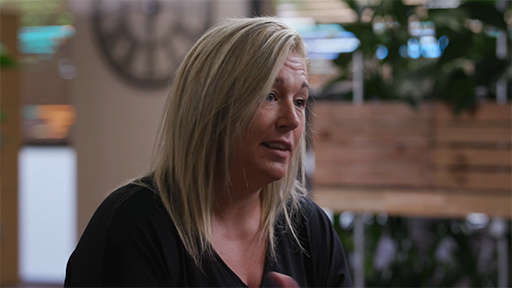1 Changing priorities
As the way we work has changed, many organisations are redefining their culture and employee experience for a remote and hybrid-first world, and focusing on developing more inclusive workplaces and promoting social mobility. To understand what organisations are considering, and the skills they are focusing on, in the video below, Jessica Leigh Jones MBE, co-founder and Chief Executive of iungo Solutions, a company working at the intersection of business, education and government, discusses what employers can do to maximise diversity and enable social mobility, observing that ‘learning and development plays an important role in levelling the playing field for socially diverse talent’.
Recruiting and retaining that socially diverse talent benefits both employers and employees but, as Gemma Hallett, Head of Skills at Fintech Wales and founder of Mifuture, comments in the video, matching skills to roles, particularly in remote rural areas of Wales, has sometimes been an issue. However, remote and hybrid working is bringing new opportunities to these communities – though this is not without its challenges.

Transcript
Clearly, the hybrid workplace is here to stay, meaning it is more important than ever to learn and develop the skills and behaviours required to succeed within this new environment.
If you are about to enter or return to the workplace, now is a good time to think about your expectations around hybrid working and to reflect on what your priorities are for personal and professional development in this next phase of your life. Activity 1 will help you to consider both of these things in relation to this course.
Activity 1 Definitions and priorities
Reflecting on the video and those organisations that are still evolving as they redefine their cultures for hybrid ways of working, answer the following questions.
Examine Halford’s (2005) definition of hybrid working in the Introduction. Do you think this definition still applies today? What would you change about it?
Read the course Learning outcomes and rank them in order of importance for you personally in terms of what you need most help with, with 1 being the most important and 7 being the least. This should help you determine where to focus your time on this course.
Comment
The term ICT (Information and Communications Technology) isn’t used so much today, in the 2020s. However, the principle of using technology to work in an organisational setting and somewhere else is still valid. That said, in the 2020s, working remotely does not necessarily mean working from home, since the development of mobile technology enables people to work on the move, such as on a train. Since the COVID-19 pandemic, there has also been more of a focus on flexibility of working patterns, for example to allow employees to balance work responsibilities and caring responsibilities.
There are no right or wrong answers for this question. If you have limited time, you might want to concentrate first on the parts of the course that cover the learning outcomes you ranked as 1 or 2. Otherwise, work through the course in chronological order, as this is how the course has been designed.
